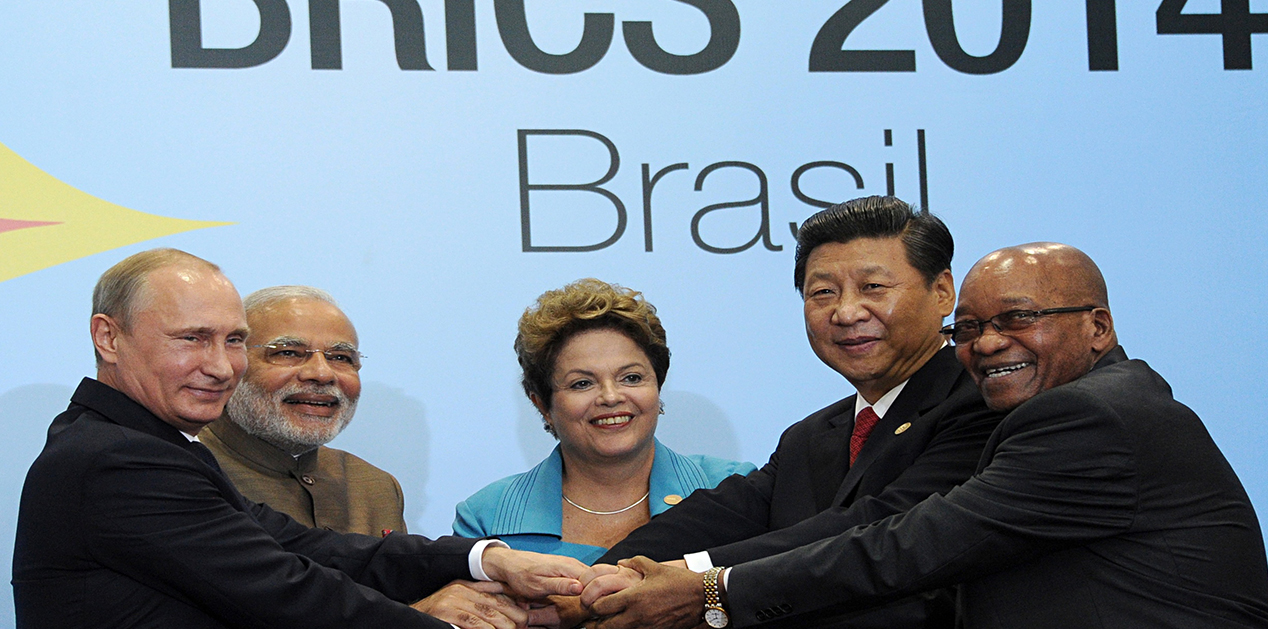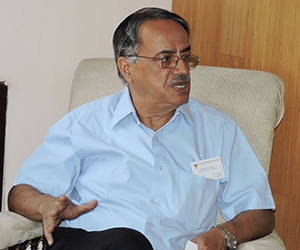Prime Minster Modi’s aim during his Chairmanship of the Brazil, Russia, India, China and South Africa or the ‘BRICS’ forum is to give it shape and substance both in terms of making it a responsible multilateral institution, firstly, as an important factor in geopolitics, and secondly, in the emerging economic discourse. Modi’s preferences and direction of his efforts can be easily discerned from the speeches he has given during G 20 meeting of 2015 as also during this year’s G 20 Summit, at the BRICS and SCO Summits last year at Ufa, Russia, and at the ASEAN-India and the East Asia Summits this year. Countering global and regional terrorism through a unified approach has been his main theme which is also linked to global governance in many ways. Thus, under his stewardship India intends to shift the priority from the limited aspects of economy to the larger aspects of global issues where combating terrorism has acquired increasing urgency.
PM Modi had called for “the need for a united global effort to combat terrorism” in Ufa. Even at the BRICS meet on the sidelines G 20 Summit at Hangzhou, which PM Modi chaired, he called for members ‘to intensify joint efforts to combat terrorism’. A common approach on terrorism by BRICS could contribute positively to the emerging international security architecture. Of course, looking at the year long list of events being organized by India in connection with BRICS that range from renewable energy to scientific research, and from measures to adopt for combating corruption to the establishment of a film festival, the agenda is far more diversified and comprehensive. As it is quite evident, all the five members of BRICS share common perspectives on many of the global issues and are working to change the western dominated narrative be it economic or strategic issues.
BRICS: State of Economies
It is quite evident that amongst the BRICS economies, both India and China are growing at a good pace despite the fact that Chinese economy has been decelerating in the recent years. While India needs investments for its infrastructure development, China has the capacities and desire to cooperate with India for a win-win outcome. Many Chinese companies have been looking at India to deploy their surplus capacities and funds in India. Some have already come in with big investments in reality sector (Wanda Group), electronic sector, and infrastructure development (construction of roads and survey for railway line). India wants to export its IT services, pharmaceuticals and other services and products for which ways need to be found for mutually beneficial cooperation. Both sides need to work on reducing the impediments and improve ease of doing business with each other.
All BRICS members have their unique strengths and characteristics despite the fact that other than China and India their economies are not doing well. Russia continues to be an important strategic partner of India in many ways and has been cooperating with India in both civil nuclear energy and hydro carbon sectors besides the defence sector. Russia has been supportive India’s membership in UNSC and other multilateral platforms. Brazil is an important country because of its size and population but also as a launch pad for rest of the Latin Americas. Same is true for South Africa as for as the entire African Continent is concerned. Strengthening of relationship in multiple areas would be part of the agenda for the meetings on the side lines of the Summit.
Similarly, the New Development Bank (NDB) is seen as an achievement of the BRICS and with India in the lead it would seek to advance sustainable development projects through lending. Ways to strengthen the NDB both bilaterally and multilaterally would be an important part of the BRICS’ deliberations. Emergence of BRICS as alternative forum to the West dominated worldview of established economies is also proceeding on a very gradual and incremental path. Some feel that nature of differing political systems of BRICS members also contribute to differing approaches being adopted at the global level. At times, adopting a common view on global macro-economics, development aid and international resource transfers, global governance etc. too present challenges.
Further, some research reports indicate that there is a negative impact of the trade policies of individual BRICS members upon each other. Commercial ties between them are still characterized by a lack of harmony and discriminatory trade distortions. Trade imbalance between China and India, non-tariff barriers or other kinds of discriminatory practices prevent a balanced and harmonious economic relationship occurring between the parties. There are also concerns regarding limited trade and commercial relationships between India and rest of the BRICS members.
Status of BRICS Platform: India-China Equation
While development of the BRICS mechanism, which definitely has a clout given the size of its economies, populations and resources, and which is proceeding in the right direction, it is still to acquire much heft, both geopolitically and economically. Strategic divergences between the members at times prevent a coordinated approach to be adopted by members for evolving common positions on international issues. Insofar as India and China are concerned, both can work closely in a number of areas, yet heightened strategic dissonance between the two would obviously have a negative impact on the effectiveness and functioning of the BRICS as an important forum.
In line with India’s views on terrorism emanating from Pakistan, PM Modi, during the meeting on the sidelines of G 20 Summit, had apprised President Xi Jinping about India’s concerns and told him that countries have to be responsive to each other’s sensitivities. “The response to terrorism must not be driven by any political consideration," PM Modi had said alluding to China's opposition to designating Jaish-e-Mohammed chief Masood Azhar as a terrorist by the United Nations. PM Modi had further gone on to say that India and China should understand each other’s aspirations and concerns for better ties. India's concerns also pertain to China-Pakistan Economic Corridor (CPEC) being laid through the Pakistan Occupied Kashmir. China has previously objected to the Asian Development Bank (ADB) giving funds for hydro-power developmental projects in the Arunachal Pradesh as also to India’s hydro-carbon exploration activities in the Exclusive Economic Zone (EEZ) of Vietnam which is claimed by China.
President Xi in fact had said that China was willing to work with India to maintain the hard-won sound relations and further advance their cooperation. Therefore, it is quite evident that India’s concerns about cross-border terrorism will again form the subject of discussions between PM Modi and President Xi on the sidelines of the BRICS Summit. According to Indian sensibilities, it is difficult to fathom the reason for China not removing the technical hold on Jaish-e- Mohammed’s chief Masood Azhar being included in the UN designated terrorist list. In any case, Jaish-e-Mohammed terror group is a UN designated terrorist group. So why not its leader?
Addressing the trade imbalance between China and India has also been a recurring theme in many bilateral meets, whether on the sidelines of such summits or otherwise. Further, China’s proposal for a Free Trade Agreement (FTA) between the five major emerging economies has not found much favour with the other members of the grouping. Evidently, China’s aim was to expand trade between BRICS members but fears of Chinese imports hurting their local manufactures are paramount. Other countries were also not keen to start negotiations on a separate ‘BRICS Investment (protection & promotion) Treaty’. India in any case is participating in the Regional Comprehensive Economic Partnership (RCEP) which would be a regional FTA that includes India and China. It is another matter that even RCEP may not turn out to be of much benefit to India.
PM Modi’s Efforts for Projecting India while Building the BRICS
The theme of the Summit is based on the BRICS acronym, i.e. 'Building Responsive, Inclusive and Collective Solutions’. The centrality of this theme revolves around ensuring that the BRICS work closely to find solutions to issues confronting the group’s economies. The last BRICS Summit in Russia had adopted the Ufa declaration which aimed at working out a strategy for economic partnerships and consequently, India is working on a programme to develop trade, investment and economic cooperation in a number of fields, including manufacturing, minerals processing, energy and agriculture.
At the last Ufa summit, PM Modi had proposed a 10-point programme for consensus between member countries to impart momentum to the process of closer cooperation between the BRICS nations. The ten steps for enhancing cooperation include a BRICS trade fair, a railway research centre, cooperation among supreme audit institutions, a digital initiative, an agricultural research centre, a forum of state and local governments among the BRICS nations, cooperation among cities in the field of urbanization, a sports council and an annual sports meet, taking up the development of clean energy as the first major project of the NDB and a film festival. These initiatives are being given a practical shape for implementation.
India is using this opportunity to sell PM Modi’s recent flagship initiatives like the ‘Make in India’ project and seek investments from the BRICS in the field of infrastructure development. India is also holding a Trade Fair and an Investor Forum to promote programmes such as ‘Make In India’, ‘Smart City Mission’, ‘Digital India’ and ‘Start-up India’, all part of PM Modi’s initiatives where the BRICS members can cooperate in many ways.
In conclusion, it can be said that the BRICS forum is yet to realise its full potential given the varying nature of their strategic interests, state, size and character of the economies as also possibly the nature of their different political systems. In the near to mid-term future therefore, it is unlikely to replace the western dominated institutions both in terms of geopolitical and economic discourse.
Published Date: 12th October 2016, Image Source: https://en.wikipedia.org
(Disclaimer: The views and opinions expressed in this article are those of the author and do not necessarily reflect the official policy or position of the Vivekananda International Foundation)











Post new comment